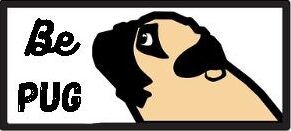A Pug’s Peculiar Quirk: Decoding the Reasons Behind Why Pugs Tilt Their Head

Discover the adorable mystery behind pug head tilts in this enlightening article. Unravel the possible reasons that explain this endearing behavior, from cognitive processes to canine communication. Join us as we delve into the world of pugs and uncover the science behind their precious head tilts.
I. Introduction
A. The Irresistible Charm of Pug Head Tilts
Have you ever wondered why pugs tilt their heads so charmingly? This captivating behavior adds to their adorable appearance and has underlying reasons rooted in their cognitive and social abilities. Understanding these fascinating aspects can provide valuable insights into the world of pugs and enhance our connection with these lovable creatures.
B. Unleashing the Canine Mind: The Importance of Decoding Dog Behavior
Deciphering the reasons behind pug head tilts is not just a matter of satisfying our curiosity; it’s an opportunity to understand canine behavior as a whole better. We can enhance our knowledge of dog cognition, communication, and even health by delving into the possible explanations for this particular quirk. This information, in turn, allows us to deepen the bond with our pets and ensure their well-being, ultimately leading to a more harmonious and fulfilling relationship.
II. Cognitive Processes Behind Head Tilts
A. Tuning In How Pugs Decode Human Speech
- Honing in on Sound: Auditory Localization
One possible explanation for pug head tilts is auditory localization, the process by which dogs pinpoint the origin of a sound. By tilting their heads, pugs may be attempting to adjust their ears’ position to capture better and process auditory information. This behavior could be particularly useful when pugs try to comprehend their human companions’ vocal cues and commands. - Eavesdropping on Emotion: Listening to Vocal Cues
In addition to localizing sounds, pugs may tilt their heads to focus more intently on the nuances of human speech. This helps them identify the emotional content and intent behind our words. By honing in on vocal cues, pugs can better understand our emotions and respond accordingly, strengthening the bond between pet and owner.
B. The Inquisitive Canine: Curiosity and Problem-Solving in Pugs
- Piquing Pug Interest: The Inquisitive Nature of Pugs
Another factor that could contribute to pug head tilts is their natural curiosity. Pugs are known for their curiosity, often engaging with their environment and seeking new experiences. When faced with unfamiliar or intriguing stimuli, pugs may tilt their heads to investigate and make sense of the situation. - Gaining a New Perspective: Visual Advantages of Head Tilts
Head tilts may also affect how pugs perceive their surroundings visually. Pugs can adjust their line of sight by tilting their heads and gaining a better view of objects or people. This alternate perspective could provide them with valuable information to better understand and navigate their environment, showcasing their innate problem-solving skills.
III. Canine Communication and Body Language
A. Sharing Emotions: How Pugs Express Themselves
- Building Bonds: Empathy and Engagement
Head tilts in pugs may also serve as a means of emotional expression, particularly regarding empathy and engagement. Pugs can convey their attentiveness and willingness to connect with humans by tilting their heads. This empathetic behavior helps foster a stronger relationship between pugs and their owners, demonstrating the dog’s desire to understand and respond to human emotions. - Capturing Hearts: Attention-Seeking Behavior
Another possible reason for pug head tilts is attention-seeking. Pugs are known for their affectionate and friendly nature, often craving the love and attention of their human companions. By tilting their heads, pugs may be attempting to elicit a response or gain the focus of their owners. This endearing behavior is not only captivating but also serves to strengthen the bond between pet and owner.
B. The Social Side of Pugs: Interaction and Play
- Peacemaking Pooches: Submission and Appeasement
Head tilts can also be a form of submission and appeasement in social situations. Pugs may tilt their heads when interacting with other dogs or humans to signal that they are non-threatening and amicable. This submissiveness display helps maintain harmony in social settings and can prevent potential conflicts. - Ready for Fun: Playfulness and Excitement
Lastly, pug head tilts may be an expression of playfulness and excitement. When a pug is eager to engage in play or anticipates a fun activity, it may tilt its head to show enthusiasm. This dynamic behavior reflects their zest for life and invites others to join the excitement.
IV. Physical Factors Influencing Head Tilts
A. Unique Pug Anatomy: The Influence of Breed-Specific Traits
- Flat-Faced Factors: Brachycephalic Features
Their breed-specific anatomy may also influence pug head tilts, particularly their brachycephalic features. As flat-faced dogs, pugs have compressed nasal passages and facial structures, affecting their ability to perceive their surroundings. Pugs may compensate for these anatomical limitations by tilting their heads, allowing them to better understand and interact with their environment. - The Ears Have It: Ear Structure and Hearing
The unique structure of pug ears could also play a role in head-tilting behavior. Pugs with small, folded ears may not capture sound as efficiently as other breeds. As a result, pugs might tilt their heads to improve their ability to hear and process auditory information, ensuring they can effectively communicate with their human companions.
B. A Matter of Health: Recognizing Potential Health Concerns
- Itchy Ears: Ear Infections and Head Tilts
While many head tilts in pugs are harmless and endearing, it’s essential to consider potential health issues that may prompt this behavior. Ear infections, for instance, can cause discomfort and inflammation, leading a pug to tilt its head to alleviate the pain. If your pug exhibits head tilting accompanied by other signs of distress, such as scratching or whining, it’s crucial to consult a veterinarian for proper diagnosis and treatment. - Off-Balance: Vestibular Disorders
Another health concern that could cause head tilts in pugs is vestibular disorders. The vestibular system, responsible for maintaining balance and coordination, can be affected by various conditions, such as infections, trauma, or age-related degeneration. If a pug experiences head tilting alongside symptoms like loss of balance or difficulty walking, it’s essential to seek veterinary care to determine the underlying cause and implement appropriate treatment.
V. FAQs
Q: Is head tilting a unique behavior for pugs, or is it observed in other dog breeds?
A: While pugs are often associated with head tilting, this behavior can be observed in dog breeds. Each breed may have specific reasons for head tilting, often linked to breed-specific traits or general canine cognitive processes and communication.
Q: Does head tilting indicate that a pug is confused or trying to understand something?
A: Head tilting can signify that a pug is trying to comprehend or investigate a situation. This behavior may result from their inquisitive nature, auditory localization, or an attempt to gain a better visual perspective.
Q: Can head tilting indicate a health issue in pugs?
A: In some cases, head tilting can indicate an underlying health issue, such as an ear infection or a vestibular disorder. If other signs of discomfort or distress accompany the head tilting, it’s essential to consult a veterinarian for proper diagnosis and treatment.
Q: How does a pug’s brachycephalic facial structure influence head tilting?
A: A pug’s brachycephalic facial structure, characterized by a flattened face and compressed nasal passages, can affect its ability to perceive its environment. Head tilting might be a compensatory mechanism that allows pugs to better understand and interact with their surroundings.
Q: Is head tilting a form of communication in pugs?
A: Yes, head tilting can be a form of communication in pugs. This behavior can convey emotions such as empathy, engagement, or playfulness and serve as a means of submission or appeasement in social situations.
Q: Can head tilting be a sign of attention-seeking behavior in pugs?
A: Head tilting can sometimes indicate attention-seeking behavior in pugs. This lovely gesture might capture their owner’s focus and strengthen the bond between the pet and the owner.
Q: Should I be concerned if my pug tilts their head frequently?
A: If your pug frequently tilts their head but shows no signs of discomfort, pain, or distress, it’s likely a normal behavior associated with cognitive processes or communication. However, if you notice any additional symptoms or unusual behavior, it’s essential to consult a veterinarian to rule out potential health issues.
VI. Conclusion
A. Unraveling the Mystery: A Recap of Pug Head Tilt Reasons
Throughout this article, we have explored the factors contributing to the adorable head tilts of pugs. These captivating behaviors are deeply rooted in the pug’s unique nature, from cognitive processes such as auditory localization and curiosity to emotional expression and social interaction. Additionally, breed-specific anatomy and health considerations may also influence the occurrence of head tilts.
B. Beyond the Tilt: The Value of Understanding Canine Behavior
Understanding the reasons behind pug head tilts is more than a delightful exploration of this endearing trait. By gaining insight into the underlying cognitive processes and communication methods of pugs, we can better appreciate and connect with these lovable creatures. This knowledge ultimately leads to a deeper bond between pet and owner, enhancing our ability to provide the care and attention our furry friends need for a happy, healthy life.
VII. Suggested Readings
For those looking to dive deeper into understanding the nuances of canine behavior, particularly the charming quirks of breeds like pugs, there is a wealth of knowledge to be found in the literature. From the underlying science of dog behavior to practical training guides, the following books stand out for their insightful and comprehensive exploration of what makes our canine companions tick:
- “The Other End of the Leash: Why We Do What We Do Around Dogs” by Patricia B. McConnell – This book provides a unique perspective on the relationship between dogs and humans, emphasizing the importance of mutual understanding for harmonious coexistence.
- “The Dog’s Mind: Understanding Your Dog’s Behavior” by Bruce Fogle – Fogle delves into the cognitive processes of dogs, offering readers a deeper understanding of why dogs act the way they do, including insights into common behaviors like head tilting.
- “Inside of a Dog: What Dogs See, Smell, and Know” by Alexandra Horowitz – Horowitz’s book is a fascinating journey into the world from a dog’s point of view, shedding light on their perceptions, emotions, and the intricacies of their behavior.
- “How Dogs Love Us: A Neuroscientist and His Adopted Dog Decode the Canine Brain” by Gregory Berns – This book explores the results of groundbreaking research on the canine brain, providing evidence of the deep emotional lives of dogs and their capacity for love.
Exploring these readings will not only enhance your knowledge of dog behavior but also enrich your relationship with your pug or any dog. Understanding the ‘why’ behind actions such as head tilting can transform the way we interact with our pets, leading to more empathetic and responsive care. As we close the chapter on this particular curiosity, it’s clear that the journey to understanding our canine friends is as rewarding as it is enlightening.






